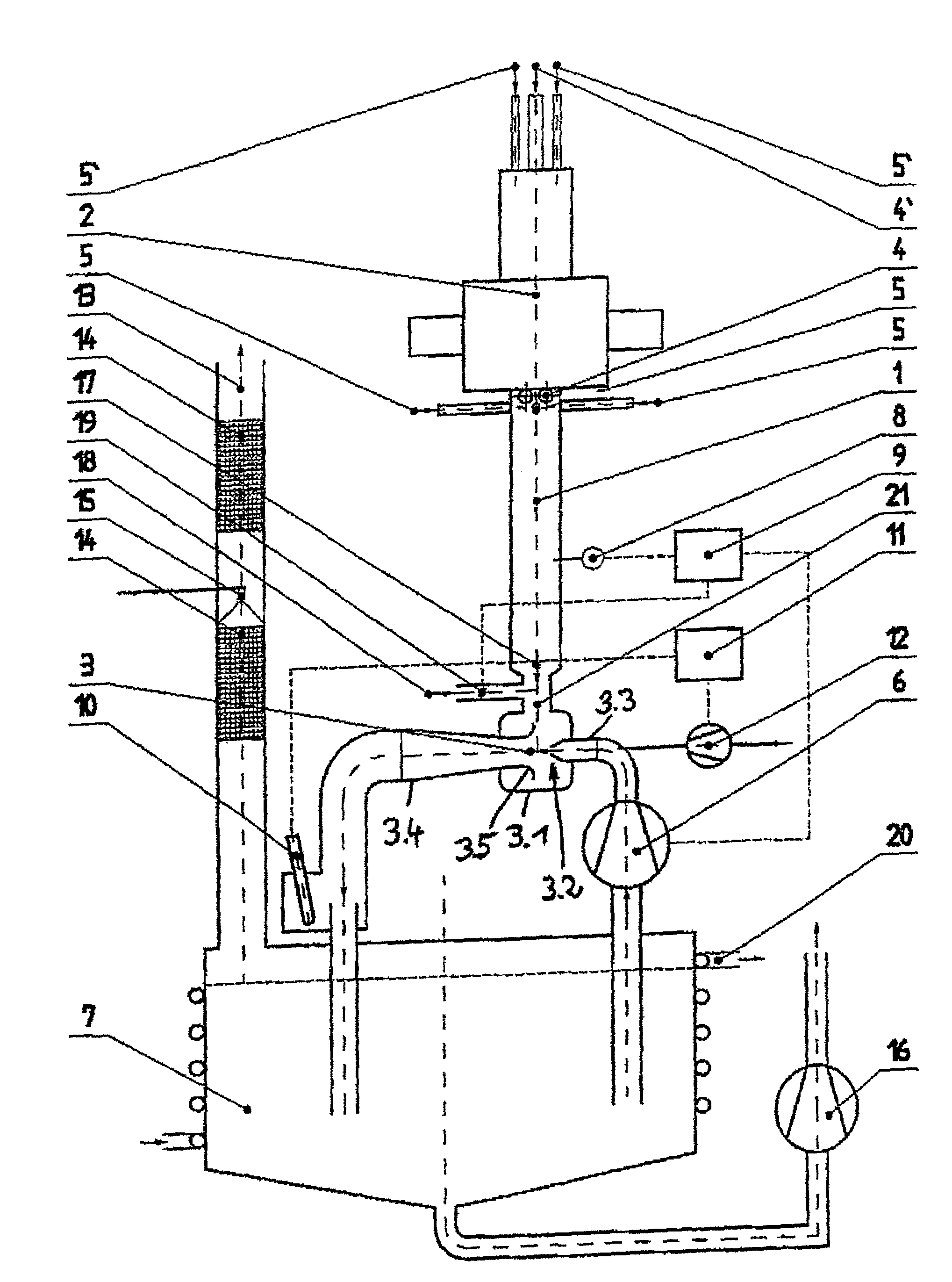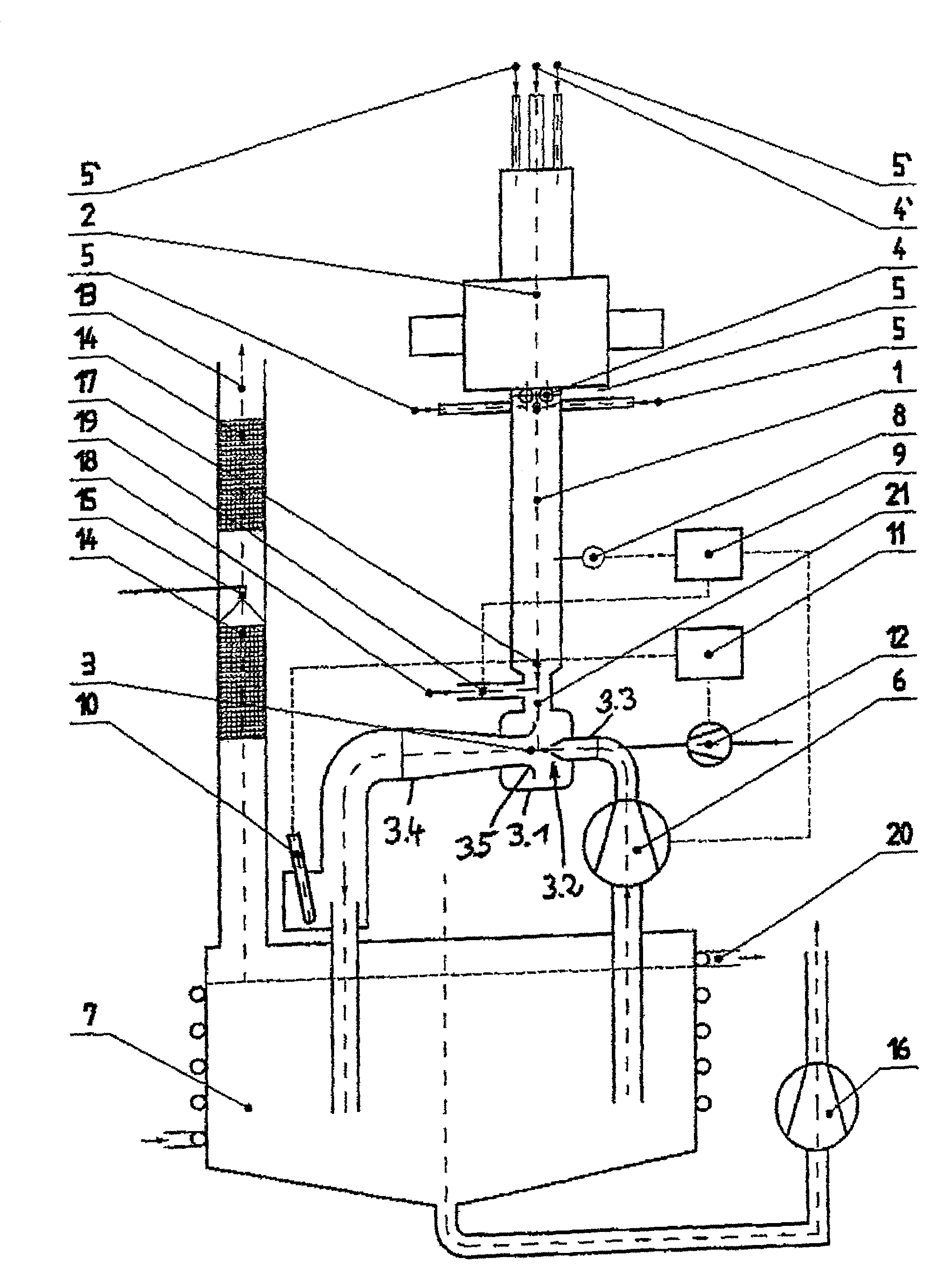Emission control system
a technology of emission control and waste gas, which is applied in the direction of lighting and heating apparatus, combustion process, combustion treatment, etc., can solve the problems of large media consumption disadvantage, relative high operating cost, and high installation cost, and achieves effective and low-cost disposal, increase in plasma volume, and increase the volume of waste gas
- Summary
- Abstract
- Description
- Claims
- Application Information
AI Technical Summary
Benefits of technology
Problems solved by technology
Method used
Image
Examples
Embodiment Construction
[0032]The waste gas cleaning system consists of a reaction chamber 1, arranged vertically, and is connected at its upper end with a plasma source 2. Plasma source 2 is arranged so that excited particles in the plasma source can be fed into the reaction chamber. A microwave source that works at a frequency of 2.45 GHz and is designed for a power of up to 6 kW is a possible plasma source 2.
[0033]The reaction chamber 1 in addition has at its upper end one or more inlets 4 for process gases or vapors to be disposed of, for example. process waste gases from semiconductor manufacturing processes, as well as one or more side inlets 5 for additional gas. Oxygen, hydrogen and water vapor, or a combination thereof, are possible additional gases. When the process gases or vapors and the additional gas are to be fed directly into the plasma source 2, the plasma source 2 should likewise be provided with one or more inlets 4′ for the process gases or vapors and one or more inlets 5′ for additiona...
PUM
| Property | Measurement | Unit |
|---|---|---|
| excitation frequency | aaaaa | aaaaa |
| microwave power | aaaaa | aaaaa |
| pressure | aaaaa | aaaaa |
Abstract
Description
Claims
Application Information
 Login to View More
Login to View More - R&D
- Intellectual Property
- Life Sciences
- Materials
- Tech Scout
- Unparalleled Data Quality
- Higher Quality Content
- 60% Fewer Hallucinations
Browse by: Latest US Patents, China's latest patents, Technical Efficacy Thesaurus, Application Domain, Technology Topic, Popular Technical Reports.
© 2025 PatSnap. All rights reserved.Legal|Privacy policy|Modern Slavery Act Transparency Statement|Sitemap|About US| Contact US: help@patsnap.com


